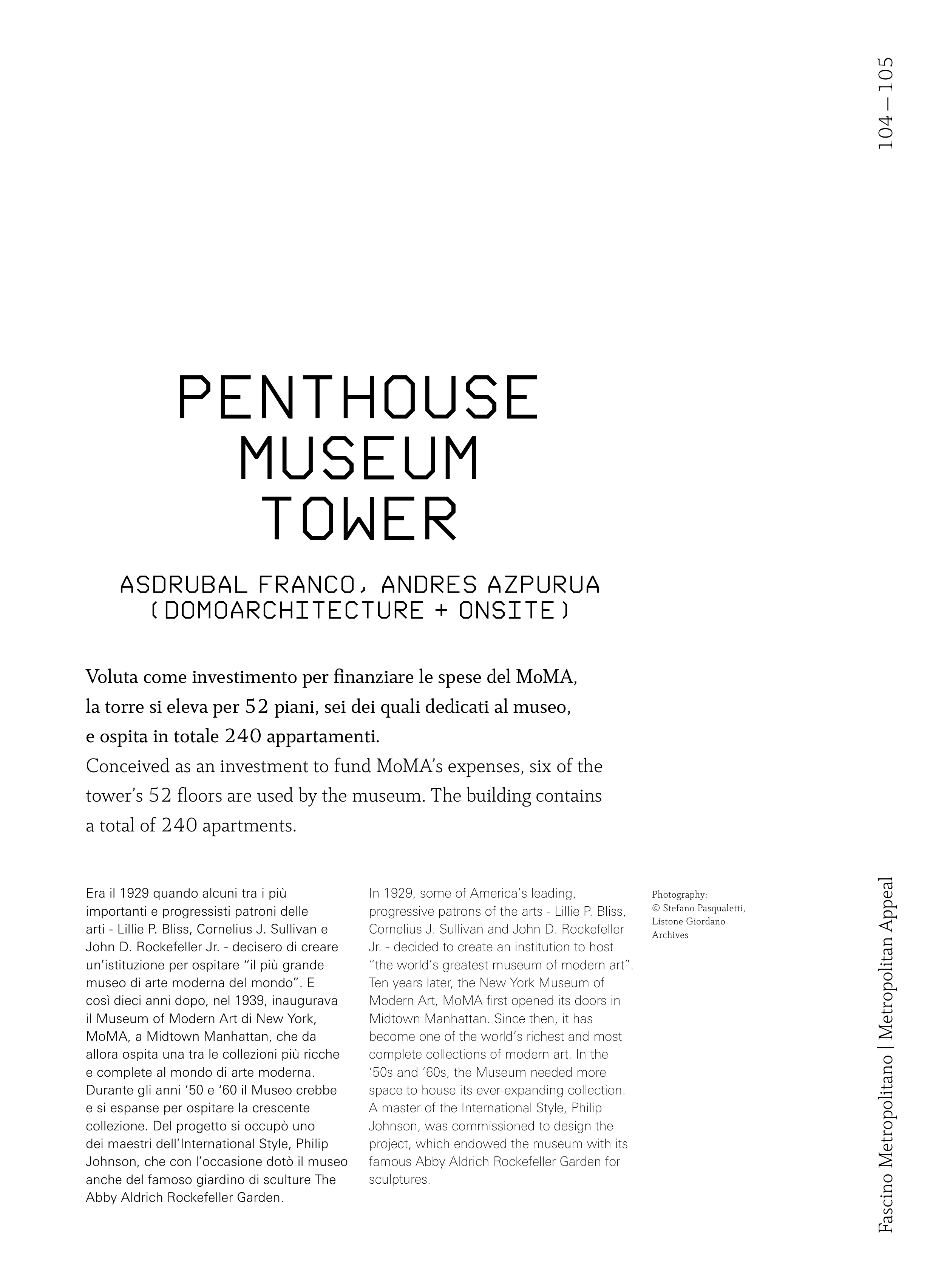Photography:
© Stefano Pasqualetti,
Listone Giordano
Archives
Era il 1929 quando alcuni tra i più
importanti e progressisti patroni delle
arti - Lillie P. Bliss, Cornelius J. Sullivan e
John D. Rockefeller Jr. - decisero di creare
un’istituzione per ospitare “il più grande
museo di arte moderna del mondo”. E
così dieci anni dopo, nel 1939, inaugurava
il Museum of Modern Art di New York,
MoMA, a Midtown Manhattan, che da
allora ospita una tra le collezioni più ricche
e complete al mondo di arte moderna.
Durante gli anni ‘50 e ‘60 il Museo crebbe
e si espanse per ospitare la crescente
collezione. Del progetto si occupò uno
dei maestri dell’International Style, Philip
Johnson, che con l’occasione dotò il museo
anche del famoso giardino di sculture The
Abby Aldrich Rockefeller Garden.
In 1929, some of America’s leading,
progressive patrons of the arts - Lillie P. Bliss,
Cornelius J. Sullivan and John D. Rockefeller
Jr. - decided to create an institution to host
“the world’s greatest museum of modern art”.
Ten years later, the New York Museum of
Modern Art, MoMA first opened its doors in
Midtown Manhattan. Since then, it has
become one of the world’s richest and most
complete collections of modern art. In the
‘50s and ‘60s, the Museum needed more
space to house its ever-expanding collection.
A master of the International Style, Philip
Johnson, was commissioned to design the
project, which endowed the museum with its
famous Abby Aldrich Rockefeller Garden for
sculptures.
Voluta come investimento per finanziare le spese del MoMA,
la torre si eleva per 52 piani, sei dei quali dedicati al museo,
e ospita in totale 240 appartamenti.
Conceived as an investment to fund MoMA’s expenses, six of the
tower’s 52 floors are used by the museum. The building contains
a total of 240 apartments.
104 — 105
Fascino Metropolitano | Metropolitan Appeal
ASDRUBAL FRANCO, ANDRES AZPURUA
(DOMOARCHITECTURE + ONSITE)
PENTHOUSE
MUSEUM
TOWER


